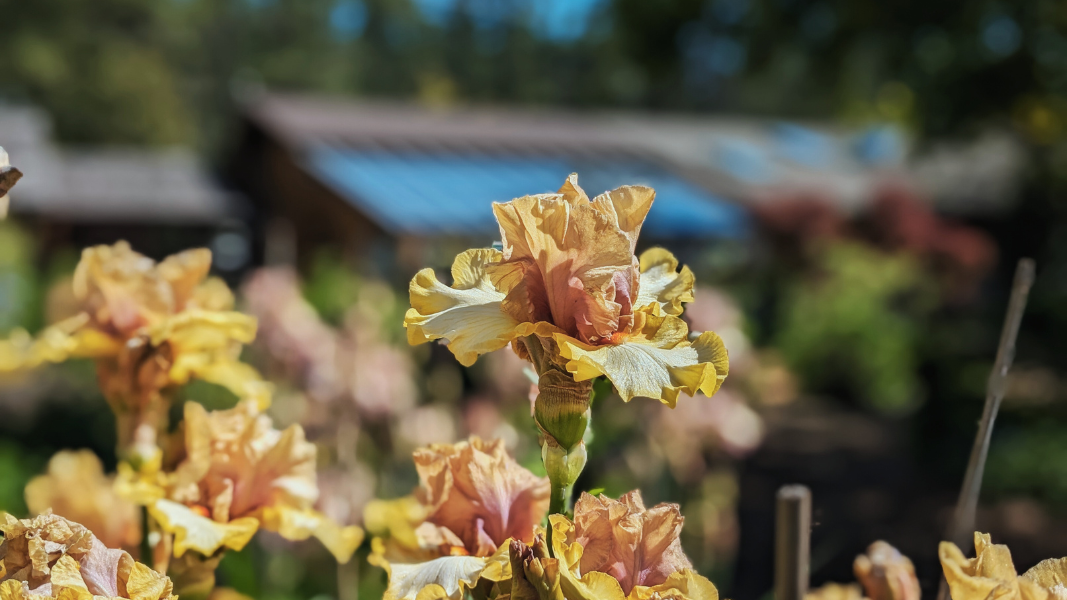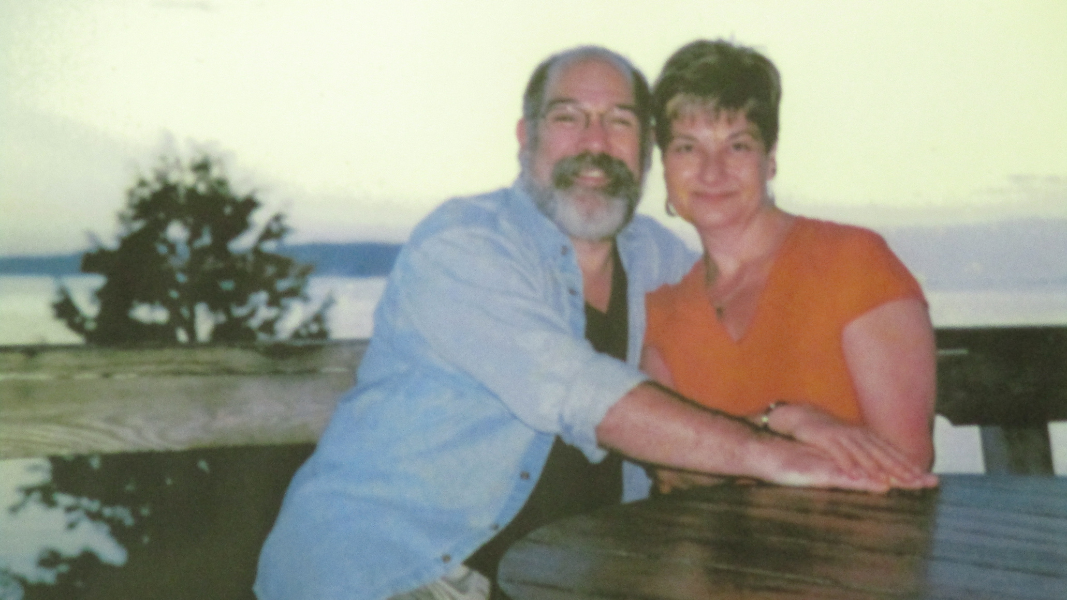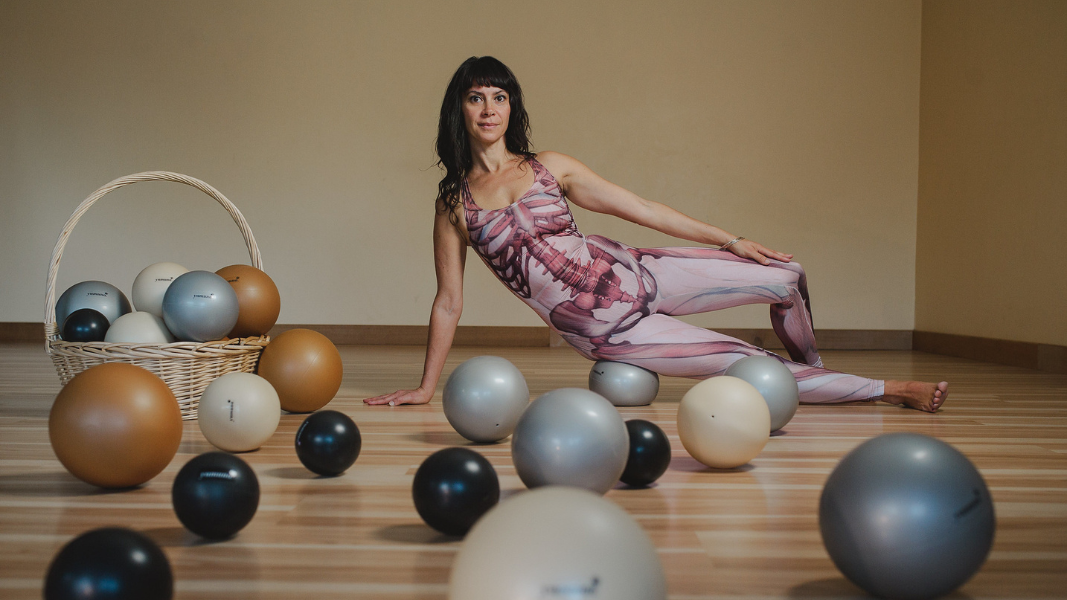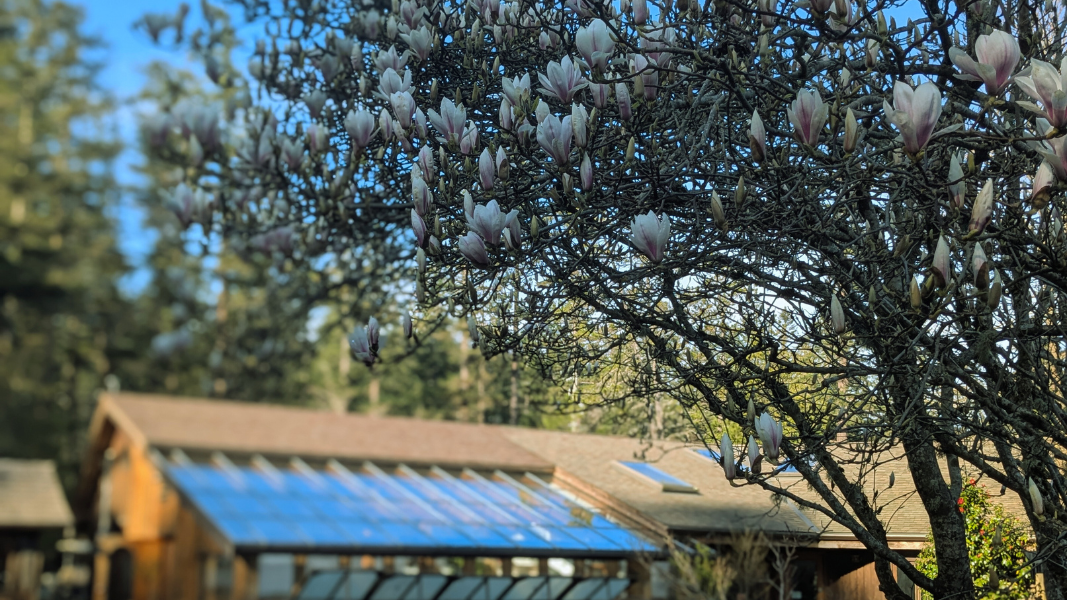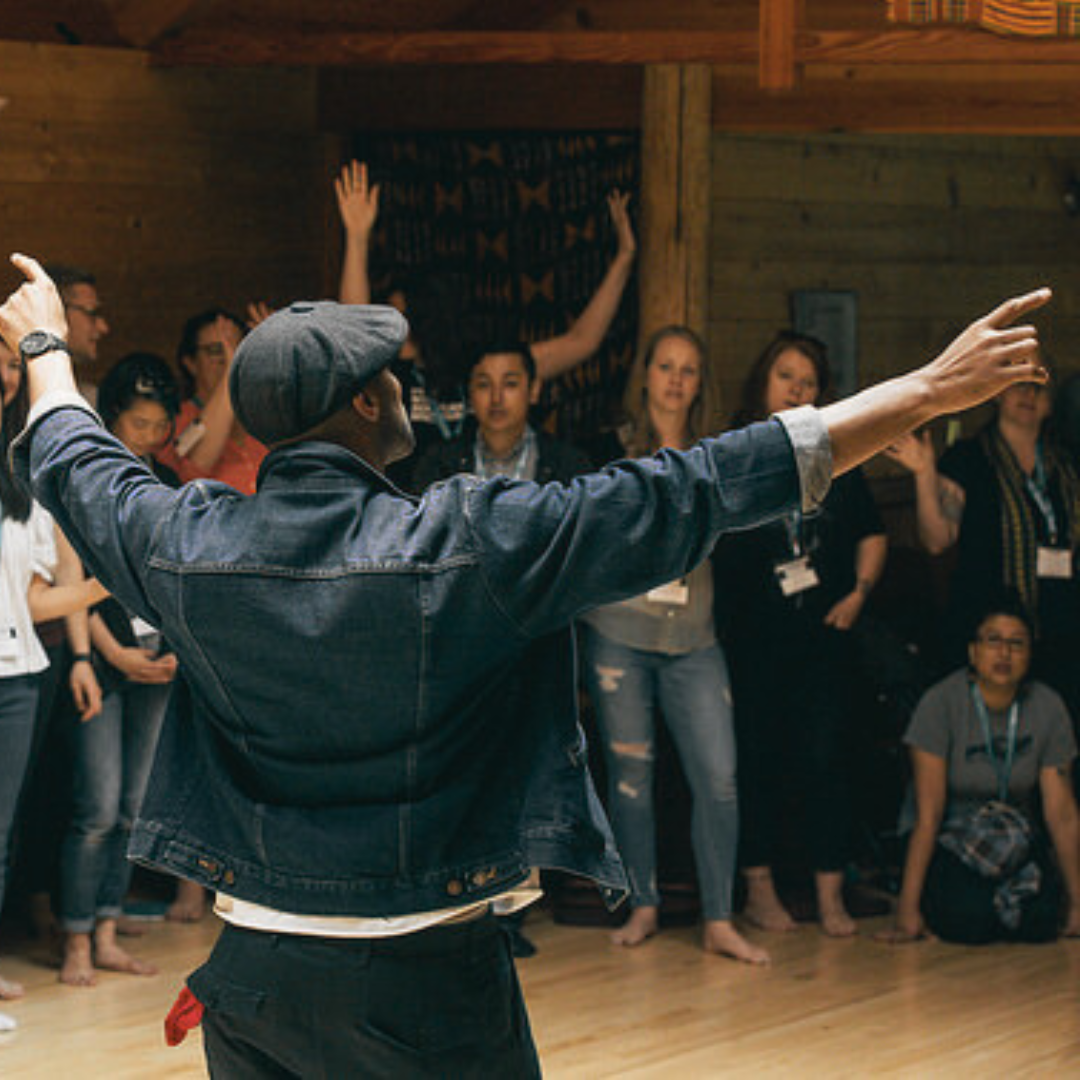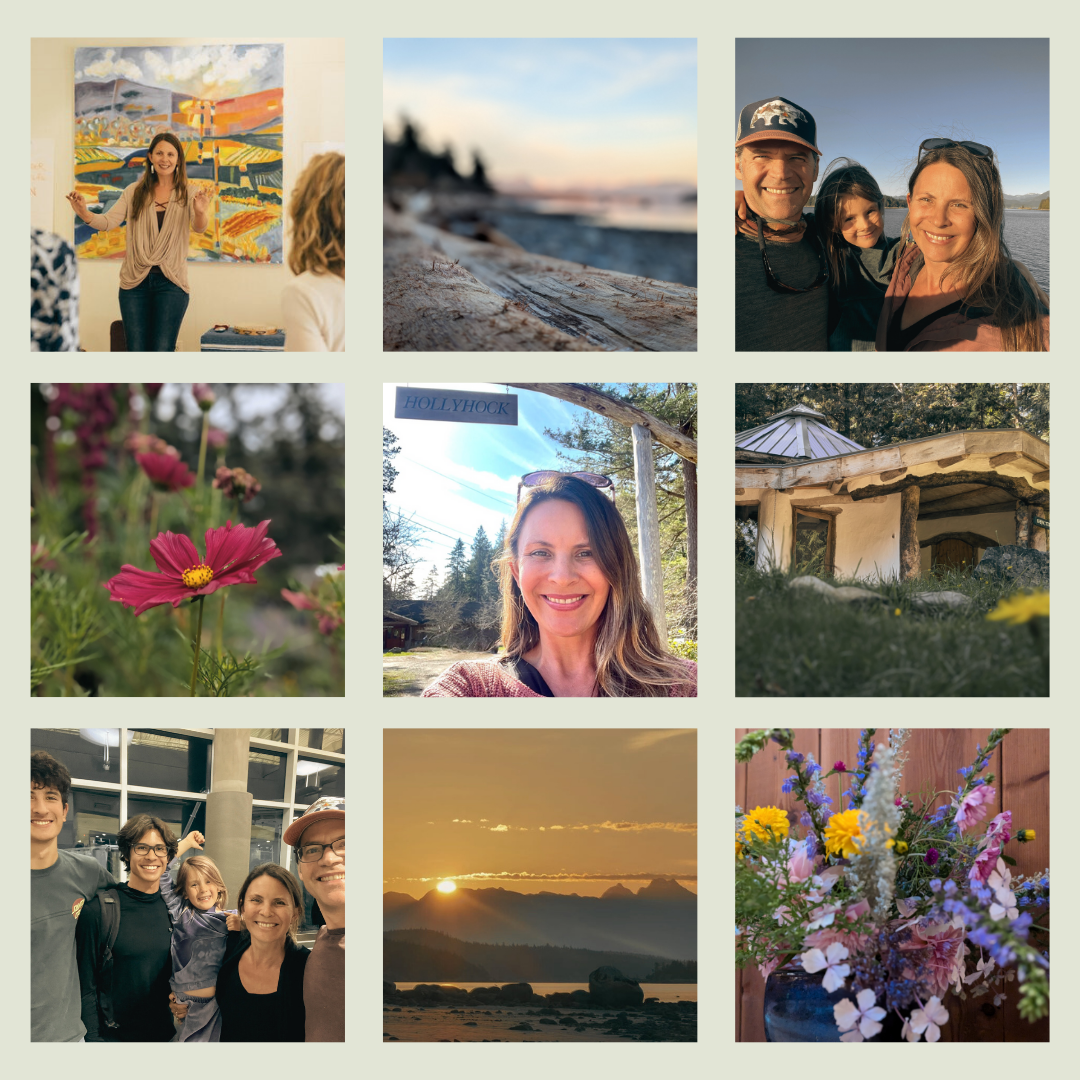At the heart of what Hollyhock does is human connection. Our leadership conferences, for example, have been so successful because they connect people of diverse backgrounds – across generations, sectors, and issues – in an atmosphere of supportive peer-learning. Paramount to this work is making Hollyhock accessible to the widest possible range of people. Since coming into my position a year ago, I have been truly challenged by what that really means and how best to do it. In the last year our team has learned a lot. Much of that learning has us investigating the difference between “diversity” and “accessibility,” and is compelling us to ask the question, how can we, as an organization, share power more equitably?
For many years, Hollyhock has supported inclusion through building relationships with a diversity of people and organizations, and fundraising to provide a scholarship program that prioritizes people of marginalized identities. Programs like IndigenEYEZ, Social Change Institute (SCI), Social Venture Institute (SVI), Web of Change, and Art of Leadership have been donor supported in order to provide scholarships and increase the diversity of voices present. Our scholarship program has been a growing part of our organization for the last 10 years.
This year, we launched a new conference, Activate: digital leadership. When planning the conference, I met with Denise Williams, CEO of First Nations Technology Council, to ask the question of how to better engage Indigenous technologists in the conference. She said something that really helped inform my thinking, “I can tell you Peter, that the answer is much more complex than just inviting another 10 Indigenous people to attend.” Khari McClelland, facilitator of Activate and SCI this year, echoed Denise’s comments and deepened my thinking when he shared with me that, “Hollyhock has to learn how to share power more equitably.”
“Hollyhock has to learn how to share power more equitably.”
The team at Hollyhock has been working on this all year. Questions of power sharing, Indigenous relations and reconciliation, cultural appropriation, and cultural safety have been issues we have been sitting with, struggling with, discussing, and acting on. This is a driven and motivated team, and at the beginning of the year we implemented a number of new internal initiatives including:
- Deepened First Nations territorial acknowledgements in communications
- KAIROS blanket exercise Indigenous reconciliation lesson for staff and Cortes Island community
- Cultural Safety Training for Vancouver staff with Courage Consulting
- Introduction of a new Community Policy on Respectful Conduct
- Campus-wide gender neutral bathrooms, except for one women- and femme-identified only bathroom
- Swimsuit requirement in hot tubs
And then in late June, a major fracture happened at Social Change Institute, where issues of white supremacy and patriarchy came to the forefront of the conference. It become clear that neither I, nor our staff team were well-equipped to deal with these issues. Personally, I did not know what to do – I was scared to do the wrong thing, say the wrong thing, be the wrong thing. As an organization, we did not live up to our mission to inspire and support people making the world better.
Since SCI, we have had a number of internal and external conversations about race and white supremacy and how it shows up in progressive organizations. Since some people in our larger Hollyhock community are unfamiliar with the usage of this term, we want to share the the definition of white supremacy that we are working with. This is from David Gillborn, a critical-race-theory scholar:
“By ‘white supremacy’ I do not mean to allude only to the self-conscious racism of white supremacist hate groups. I refer instead to a political, economic and cultural system in which whites overwhelmingly control power and material resources, conscious and unconscious ideas of white superiority and entitlement are widespread, and relations of white dominance and non-white subordination are daily reenacted across a broad array of institutions and social settings.”
(For more on this idea, see this video, Why “I’m not a racist” is Only Half the Story)
In one such conversation, Dara Parker, ED at Social Venture Partners, shared this framework with me on becoming an anti-racist multicultural organization:

I asked our team where they thought Hollyhock was situated on this graph. Most of them agreed that we were at number 3 “Symbolic Change” and have been making real strides towards number 4 “Identity Change.”
I am keenly aware that while Hollyhock through its history has devoted deep care and work towards diversity and inclusion, we continue to have much more to learn. As an organization, we have to investigate the places where white supremacy, patriarchy, and class privilege show up in our organization, move from numbers-based diversity into power-sharing diversity, and take action on creating more cultural safety for all. Our community has been asking us to do this work, and we are committed to the journey.
Looking forward, here are some of the initiatives we are working towards:
- Provide a Training on Understanding Power for our Board and staff with Inner Activist (Spring 2019). This training would support the personal inner work and groundwork that is necessary before implementing organizational-wide reconciliation, diversity, inclusion, and equity projects.
- Provide Cultural Safety Training for our Board and Cortes Island staff.
- Build a Reconciliation Plan with Amie Wolf, which would include policies and procedures around land use, scholarship granting, hiring practices, employment goals, naming practices, and more.
- Pause and put Social Change Institute in development. We are going to work with a broad spectrum of social change leaders over the next year to determine what the sector needs in a gathering like SCI for 2020.
- Increase diversity on our Board (May 2019). At our next AGM we will be adding a number of new voices to our board of directors.
- Increase diversity of our Presenters to ensure that our programs are relevant and accessible to a wider range of people and perspectives.
- Restructure our scholarship process. We will be applying an intersectional lens to our scholarship decision-making, making our application process more accessible, and increasing the maximum range for partial scholarships.
Hollyhock is a place that means many different things to different people, but at the heart of our mission, is connection. The work of connecting diverse people and ideas is not easy, as it requires structures that support people of different life experiences and backgrounds to be able to come together in a good way — in “right relations.” This is exactly the work we are here to do. We will not always be perfect, but we are committed to the process. We hope you’ll join us.
Editor: Loretta Laurin
Photocredit: Amanda Mary Creative


